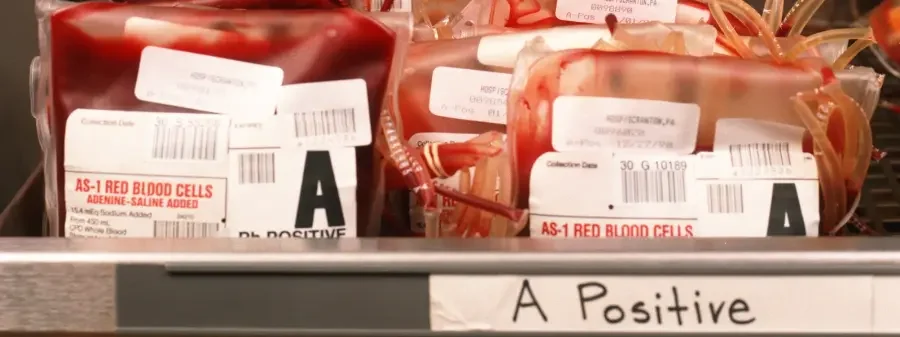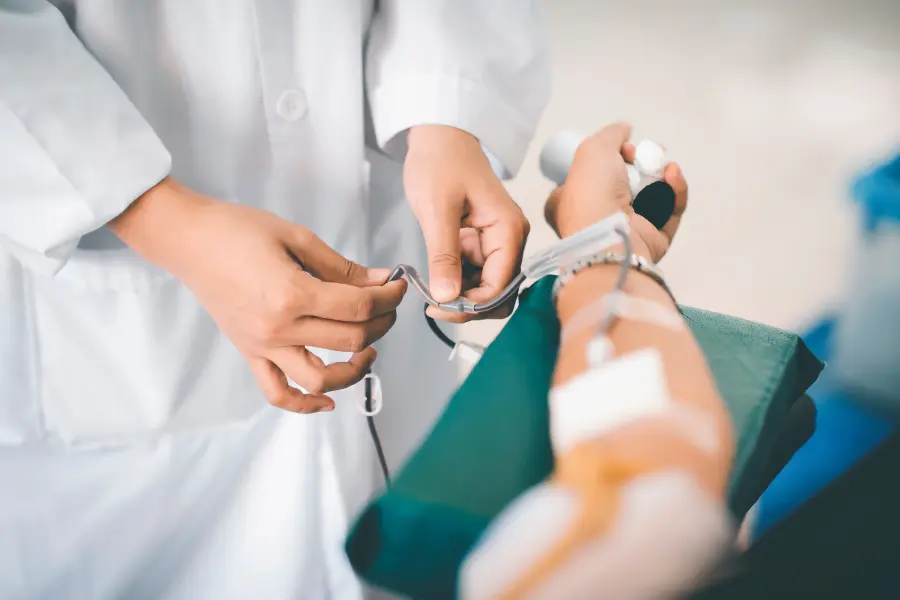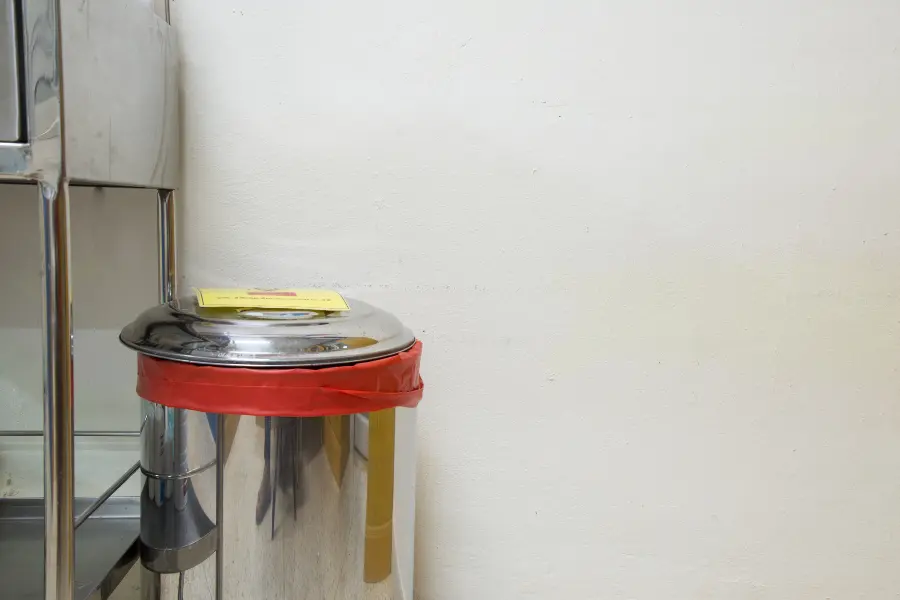Blood Bank Waste Disposal and Management

Blood banks collect, test, process, and store blood for medical patients. Donating blood is a low-risk procedure that saves lives on a daily basis. Blood banks collect about 1 pint of blood from each individual. Then, they separate the blood into different components including red blood cells, platelets, and plasma. After screening and processing, they can store the blood for up to 42 days or until they need it.
Blood banks play a critical role in the medical system and must comply with strict regulations to maintain safety. Throughout the process, there is a risk of exposure to infectious pathogens, and potentially creates hazardous waste. Blood bank facilities must adhere to safety mandates and maintain compliance to keep workers and patients safe.
Types of Blood Bank Waste

Each step of the blood donation and storage process creates waste. Small samples of blood are taken for testing, and then more blood is drawn and put into tubes for processing and centrifuging. Hazardous waste generated during these steps includes:
- Tubes
- Collection bags
- Needles & other sharps
- Catheters
- Gloves & other PPE
- Gauze
- Bandages
- Blood & bodily fluids
Blood Bank Waste Disposal & Management Standards
All blood banks are monitored by multiple regulatory agencies and required to follow a strict set of rules when it comes to collecting, storing, and removing waste from their facilities.
The Federal Drug Administration (FDA)
The goal of the FDA is to create the lowest level of risk achievable without decreasing the availability of blood as a lifesaving resource.
The Center for Biologics Evaluation and Research (CBER) is an organization within the FDA that promotes the safe and appropriate use of biological products. CBER identifies and responds to potential threats to blood safety, develops safety standards, and monitors blood supplies. FDA oversight has strengthened safeguards to protect patients in recent years.
The Occupational Safety and Health Administration (OSHA)
OSHA created the Bloodborne Pathogens Standard to protect employees during the handling and storage of regulated waste.
They define regulated waste as:
- Liquid or semi-liquid blood or other potentially infectious material (OPIMs)
- Contaminated items that could release blood or OPIMs if compressed
- Materials caked with dried blood or OPIMs that could be released during handling
- Contaminated sharps
- Pathological or microbiological wastes containing blood or OPIMs
Regulated wastes must be put in closable, leak-proof, and containers with proper labels. You must close all containers before removal to prevent spillage or release of their contents. Bloodborne pathogens must be decontaminated through physical or chemical means that remove, inactivate, or destroy pathogens to the point that they are no longer capable of transmitting infectious particles. It is the employer’s responsibility to determine the existence of regulated waste and train employees accordingly.
The Center for Disease Control and Prevention (CDC)
The CDC’s role is to monitor blood safety and warn the public of potential risks within the blood supply. They do not regulate safety as related to disposal but rather focus on errors in handling, adverse reactions, and incidents regarding blood transfusions.
Proper Disposal of Blood Bank Waste

Blood should be drawn in a monitored and controlled area that does not allow unauthorized persons to enter. Blood bank personnel should be familiar with all regulations related to their position and specific tasks. Proper management and disposal keep donors and staff safe and healthy.
Sharps Waste Disposal
You should immediately place sharps (including blood tubes, needles, and more) into an approved sharps container. When sharps containers are three-quarters full, close and seal the container. Hire a certified medical waste removal company to pick up and safely dispose of sharps containers.
Regulated Waste Disposal
You should separate regulated waste by type and place them into the appropriate containers. Package and label the waste based on your state’s regulations. Store sealed bags and boxes based on your local guidelines. Schedule pick-up with a certified medical waste removal company.
Pick up & Transportation
Your medical waste removal provider will deliver new containers and provide the required documentation. They will transport your waste to a facility for treatment and disposal. Autoclaving or incineration will treat your materials depending on your services provider. Lastly, you will receive a record of compliant disposal when the process is complete.
Connect with a Local Regulated Medical Waste Disposal Company in Your Area Today
Medical Waste Pros will connect you with a certified medical waste disposal company to safely remove your blood bank waste. We offer flexible services that will meet the specific needs of your organization. Give us a call at (888) 755-6370 or fill out the form to receive free quotes from providers near you.










